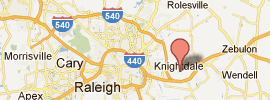From Our Blog
From Our Bankruptcy Blog
Site Tools
Connect with Our Firm
Contact Our Firm
Phone: 919-295-6001
Fax: 919-890-3833
Knightdale Law Office:
106 N. First Ave. Suite D, Knightdale, NC 27545
Mail: P.O. Box 1230, Knightdale, NC 27545
We are just east of Raleigh, NC.
Serving Knightdale, Wendell, Zebulon, Rolesville, Wake Forest, Garner, Clayton, and the greater Raleigh area.
Representing bankruptcy clients in the Raleigh, Wilson, and Durham divisions of the Eastern and Middle Districts of North Carolina.
While we endeavor to provide accurate general legal information on this website, the facts and circumstances of any individual's legal situation may vary, and the information we publish should not be taken as legal advice on any matter. Communication made via this website does not create an attorney client relationship. Attorneys licensed exclusively in North Carolina.
Per 11 U.S.C. §528(a)(4), Fabricius & Fabricius PLLC is a debt relief agency. We are proud to assist individuals, families, & small businesses seeking bankruptcy relief in North Carolina.


